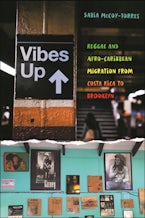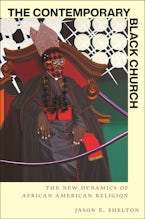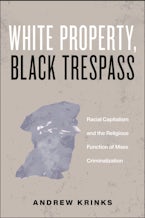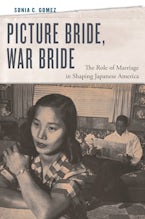The Life and Martyrdom of Diego Luis de San Vitores, S.J. (2nd Edition)
$30.00
2024-08-06
$30.00
2024-08-13
Proposes a queer way to be in the world and with others
Invoking queer aesthetics, ethics, and politics, Bottoms Up explores a sexual way to be with others while living with loss. Xiomara Cervantes-Gómez demonstrates how aesthetic representations of sex—namely, bottoming—function as allegorical paradigms, revealing the assemblages of violence that have constituted the social, cultural, and political shifts of Mexico and US Latinx culture from 1950 to the present.
With playful, theoretically nuanced prose, Cervantes-Gómez builds upon queer of color theory and continental philosophy to present the “bottom” as a form of relational performance, which she terms “pasivo ethics.” The argument develops through a series of compelling case studies, including a series of novels by Octavio Paz and Luis Zapata that trace the position of the bottom in Mexican nationalist literature; the forms of exposure, risk, and proximity in the performance work of artist Lechedevirgen Trimegisto; a reading of violence and the erotic in the work of artist Bruno Ramri; and reading artists such as Yosimar Reyes, Yanina Orellana, and Carlos Martiel as they build a framework of sexual inheritance that carries the traumas of Mexicanness into the diaspora.
Through a broad archive rooted in hemispheric Latinx performance, Bottoms Up considers how sexual and political power are bound up with each other in the shaping of Mexicanness. Placing particular emphasis on questions of queer and trans Mexican embodiment, the book explains how Mexicanness is constituted through discourses of exposure.
$30.00
2024-08-13
A compelling exploration of materiality and semiotics in Latinx inscriptions
Writers and artists from Cuba, Puerto Rico, and Latinx New York operate under the pressures of inscription: the material and semiotic entanglement of making a mark as a marked artist. By employing layered material tropes and figures, such as stone, dust, viscera, and animality, their works do not represent a singular Latinx experience and instead, must be read at the margin of language and matter.
Matters of Inscription explores feminist and queer inscriptions of Latinidad, encompassing the intersections of materiality and semiotics in art, performance, poetry, plays, and fiction. By delving into these figural matters, Christina A. LeĂłn highlights how writers and artists such as Zilia Sánchez, Ana Mendieta, Manuel Ramos Otero, MarĂa Irene FornĂ©s, Justin Torres, and Roque Salas Rivera forge material inscriptions that transcend individual lives and call for a broader analytical perspective unmoored from biographical anchors.
The book urges readers to reevaluate the notion of difference, which has momentarily sought solace in identitarian terminology. León engages in rhetorical analysis that reassesses how the terms of Latinx studies have been challenged and how they are failing. Rather than categorizing texts based on predetermined taxonomic terms or individual subjects’ lives, the book tracks figures situated at the edges of materiality and semiosis. This approach addresses the continuous marginalization and dispossession that shape the phenomenon of Latinx identity (“latinidad”) by recentering conceptual questions of origin, diaspora, pedagogy, and belonging. The book contends that losses and deprivations should be rendered incommensurate to avoid collapsing the richness of different experiences or scales of ontological debasement.
By focusing on the interplay of materiality and semiotics, Matters of Inscription challenges conventional approaches that seek to homogenize and anticipate what Latinx might mean and instead calls for a more capacious and nuanced analysis that goes beyond individual biographies.
$30.00
2024-08-13
Examines reggae culture as an expression of cultural, racial, and gender empowerment in the West Indian Diaspora
In popular media Caribbean culture has either been reduced to stereotypes of laziness, marijuana, and reggae music, or conversely, to an identity centered around a refutation of colonialism. Both are oversimplifications, and do not explain the enduring Caribbean identity and empowerment throughout the diaspora. Vibes Up offers an exploration of Caribbean culture as it is felt, understood, and expressed, centered on research conducted in Brooklyn and Costa Rica.
Sabia McCoy-Torres demonstrates how reggae culture—which encompasses the music and performance modes of both “roots” and “dancehall”—helps to shed light on dynamics relating to migration, diaspora, queerness, Blackness, and Caribbean cultural subjectivity. Through an examination of elements of the Black outdoors, including nightlife venues, sidewalks, and streets in front of homes, the book shows the important role that reggae plays in articulating the frustrations of migration, establishing community and belonging, and forming transnational relationships.
Although reggae’s creators and producers are often perceived as homophobic, Vibes Up also offers a more nuanced examination of the transforming relationships between hetero and LGBTQ+ people in reggae spaces and the accommodation of an array of queer intimacies. The framing of Caribbean Blackness as an expression of perseverance, agency, joy, and the erotic, as opposed to a reaction to colonization, oppression, and enslavement, is a distinctly important and timely view.
$32.00
2024-08-13
Charts the changing dynamics of religion and spirituality among African Americans
Recent decades have ushered in a profound transformation within the American religious landscape, characterized by an explosion of religious diversification and individualism as well as a rising number of “nones.” The Contemporary Black Church makes the case that the story of this changing religious landscape needs to be told incorporating more data as it applies specifically to African Americans.
Jason E. Shelton draws from survey data as well as interviews with individuals from a wide variety of religious backgrounds to argue that social reforms and the resulting freedoms have paved the way for a pronounced diversification among African Americans in matters of faith. Many African Americans have switched denominational affiliations within the Black Church, others now adhere to historically White traditions, and a record number of African Americans have left organized religion altogether in recent decades. These changing demographics and affiliations are having a real and measurable effect on American politics, particularly as members of the historic Black Church are much more likely than those of other faiths to vote and to strongly support government policies aimed at bridging the racial divide.
Though not the first work to note that African Americans are not monolithic in their religious affiliation, or to argue that there is a trend toward secularism in Black America, this book is the first to substantiate these claims with extensive empirical data, charting these changing dynamics and their ramifications for American society and politics.
$32.00
2024-08-13
Argues that a refined concept of culture can be used by American courts to better analyze cases that cover the sense of community.
Supreme Court Justices frequently justify their opinions in terms of the traditions and customs of a community. Yet, the rights and interests of entities that fit neither with the state nor the individual are treated as fluid and subjective, often existing without clarity in the current legal framework. The Rights of Groups focuses on a series of specific examples to argue that a more refined concept of culture than has been employed by American courts could offer better ways to analyze a broad range of cases that employ the notion of community.
Through an original reading of the Ninth Amendment, Lawrence Rosen illustrates how a constitutional consideration for group protections might be applied to decisions arising before the Supreme Court, including the decision to overturn Roe v. Wade. Similarly, in other chapters, Rosen shows how a revised theory of culture can change the concepts—including those of “community”—that courts currently apply, whether it is the application of indigenous concepts of value to revise the statutes governing intellectual property, the importance to native peoples that burial remains be returned to the group, the role a community can play in the responsibilities attendant on the prudent investor rule, the cultural organization of Western states’ water resources, or the implementation of a new basis for group defamation suits. The book thus concludes with a call for a more sophisticated concept of culture that can sharpen our usage of the legitimate rights and interests of those entities that fit neither with the state nor the individual.
White Property, Black Trespass
$35.00
2024-08-20
Uncovers the inherently religious structure of the criminalization of Black, Indigenous, and dispossessed peoples
Most popular critical accounts of mass criminalization interpret police and prisons as purely social or political phenomena. While such accounts have been indispensable in moving millions into collective action and resistance, the carceral state remains as pervasive as ever.
White Property, Black Trespass argues that understanding why we have police and prisons, and building a world of safety and abundance beyond them, requires that we acknowledge the inherently religious function that criminalization fulfills for a colonial and racial capitalist order that puts its faith in cops and cages to save it from the existential threat of disorder that its own structural violence creates.
The story of criminalization, Krinks shows, begins with the eurochristian aspiration to become God at the expense of all others—an aspiration that gives rise to the pseudo-sacred powers of whiteness and property, and, by extension, the police power that exists to serve and protect them. Tracing the historical continuity and religiosity of the color line, the property line, and the thin blue line, Krinks reveals police power as the pseudo-divine power to exile nonwhite and dispossessed trespassers to carceral hell.
At once incisive and expansive, this groundbreaking work deepens understanding of racial capitalism and mass criminalization by illuminating the religious mythologies that animate them. It concludes with thoughts on what might be entailed in a religion rooted in rejection of the religious idolatry of mass criminalization—a religion of abolition.
$30.00
2024-08-20
Shows how domestic identity narratives and political polarization shape the sociopolitical response to refugees
The United States once played a major role in global refugee resettlement, accounting for nearly two-thirds of all refugees resettled worldwide. However, in recent years, it has dramatically cut refugee admissions and implemented discriminatory policies on refugee protection. These policies have been justified amid intensifying xenophobic rhetoric against specific groups.
In this book, Alise Coen explains why the monumental shift around refugee resettlement occurred, particularly in response to the high-profile conflict in Syria. She shows how refugees—and broader global migration debates—became contentious political issues in the US, revealing the many ways in which refugees have been increasingly weaponized as partisan symbols by Democrats and Republicans. The book calls attention to the power of rhetoric and identity narratives, and shows how the language used to talk about refugees fuels divisive
policies.
From the years leading up to the Trump administration’s policies targeting Muslim refugees to debates during the Biden administration around who deserves access to asylum, Coen examines how ideas about race, gender, and nativism shape US approaches toward migration. As arguments for “closing the border” continue to gain traction and politicians continue to use global displacement issues to further their agendas, Reconfiguring Refugees explores the ideas, meanings, and policies that undermine and influence US responsibility-sharing.
$35.00
2024-08-20
Examines the role marriage played in the lives of Japanese women during periods of racial exclusion in the United States
In 1908 the United States and Japan agreed to limit the migration of Japanese laborers to the US. The Gentlemen’s Agreement of 1908 ushered in an era of exclusion for the Japanese, but an exception was made for Japanese women who migrated as wives of Japanese men. In 1924 that exception would end with the passage of the National Origins Act. Immediately after World War II, Japanese women were once again permitted to enter the US as brides— this time, however, as the wives of American servicemen stationed throughout Japan. The ban on Japanese immigration would not be lifted until 1952.
Picture Bride, War Bride examines how the institution of marriage created pockets of legal and social inclusion for Japanese women during the period of Japanese exclusion. Sonia C. Gomez begins with the first wave of Japanese women's migration in the early twentieth century (picture brides), and ends with the second mass migration of Japanese women after World War II (war brides), to illustrate how popular and political discourse drew on overlapping and conflicting logics to either racially exclude the Japanese or facilitate their inclusion via immigration legislation privileging wives and mothers. Picture Bride, War Bride retells the history of Japanese migration and exclusion by centering women, gender, and sexuality, and in so doing, troubles the inclusion versus exclusion binary. While the Japanese were racially excluded between 1908 and 1952, Japanese wives and mothers were permitted entry because their inclusion served American interests in the Pacific. However, the very rationale enabling their inclusion simultaneously restricted and defined the parameters of their lives within the US.
Picture Bride, War Bride serves as a compelling analysis of how the intricate interplay between societal norms and political interests can both harness and contradict the interconnected frameworks of race, gender, and sexuality.
$30.00
2024-08-27
Highlights the importance of considering contemporary public culture through the lens of fan studies
The Gamergate harassment campaign of women in video games, the “Unite the Right” rally where hundreds of Confederate monument supporters cried out racist and antisemitic slurs in Charlottesville, and the targeted racist and sexist harassment of Star Wars’ Asian American actress Kelly Marie Tran all have one thing in common: they demonstrate the collective power and underlying ugliness of fandoms. These fans might feel victimized or betrayed by the content they’ve intertwined with their own identities, or they may simply feel that they’re speaking truth to power. Regardless, by connecting via social media, they can unleash enormous amounts of hate, which often results in severe real-world consequences.
Fandom Is Ugly argues that reactionary politics and media fandoms go hand in hand, and to understand one, we need to understand the other. Mel Stanfill pushes back on two mainstream assumptions: that media and the pleasure of consumption are frivolous and unworthy of study, and that fandoms are inherently progressive. Drawing on a corpus of angry social media posts, Fandom Is Ugly finds that ugly moments happen when deep emotional attachments collide with social structures and situations that have been misunderstood. By holistically examining the forms of ugly fandom in cases that touch upon race, gender, and sexuality, Fandom Is Ugly produces a comprehensive theory of the negative sides of fan attachments.











